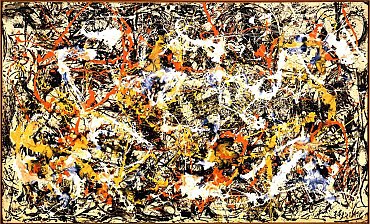In Florence, the fury of Pollock with an eye for Michelangelo

Until July 27 Florence pays homage for the first time to one of the greatest protagonist of the arts all over the world, Jackson Pollock. The artist who has undermined the rules of western figurative art and pulverized the last bastions of Renaissance perspective is compared - just in the city that was once the cradle of the Renaissance - to another great artist, celebrated this year for the 450th anniversary of his death: Michelangelo.
The exhibition is on display at Palazzo Vecchio, the symbol of political power in a city that considered the art as the element of its greater prestige. Here there are exhibited 16 works by the American artist, and in particular 6 drawings provided by the Metropolitan Museum in New York and exhibited in Italy for the first time.
Comparing Pollock with Michelangelo is undoubtedly a big challenge that brings together two cultures and two languages diametrically opposite and even antithetical. One that is based on deep respect for the order of nature and divine, and the other all projected on the unconscious and mystical geometry as a representation of an expanding universe.
But then what do these two characters - so different in time, in space and in contents - may have in common? According to the curators of this particular exhibition, the common denominator to these two titans of international art is the "fury" of the creative act. A fury that "takes on a mystical significance in the search for beauty as absolute and of infinite as the limit of artistic and purpose". It's the fury that both transmit working on their paintings, a real trance that alienate them from the world outside.
Pollock introduced a completely new way of painting, but he did it starting from the artistic personality of Michelangelo and from his work. In the '500 someone already spoke of "the fury of the figure" to describe the lines of some of Michelangelo's figures, characterized by non-finite and dynamism. While as far as Pollock is concerned, the concept is the "figure of fury" which well describes his painting, so vital and violent.
The exhibition is divided into two sections: one at the Palazzo Vecchio and another in the complex of San Firenze. The section held at Palazzo Vecchio collects - in addition to the famous Genius of Victory by Michelangelo kept in the Salone dei Cinquecento - a series of works from museums and private collections around the world, as well as the six Pollock's early drawings provided by the Metropolitan Museum in New York. The section in the San Firenze complex is instead characterized by interactive and educational multimedia devices guiding the visitor through a new way of experiencing art and understanding the works of great artists such as Pollock. Sounds and movies help to understand how the great American artist composed his paintings and propose further comparisons between the work of Pollock and that of Michelangelo.











